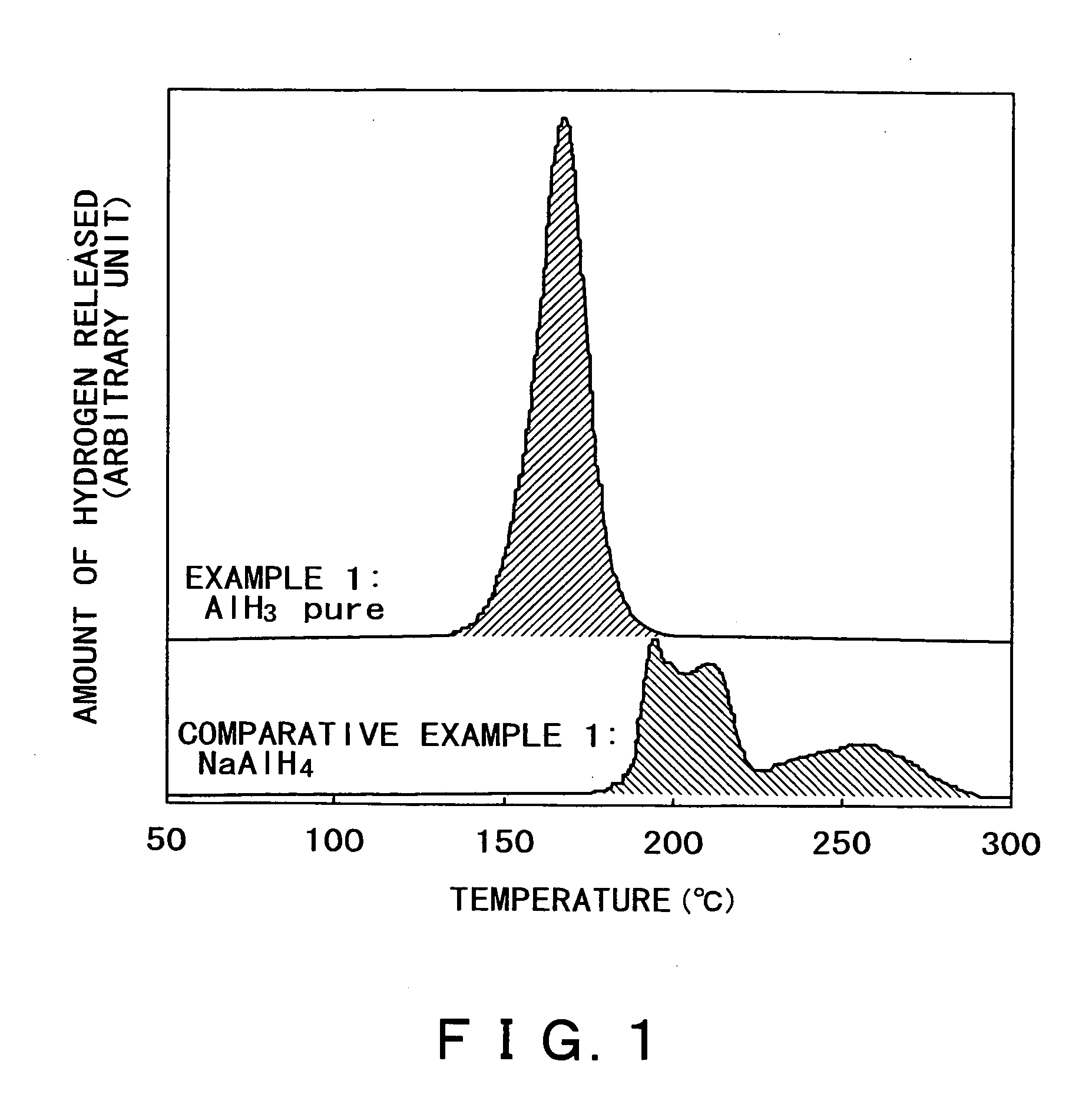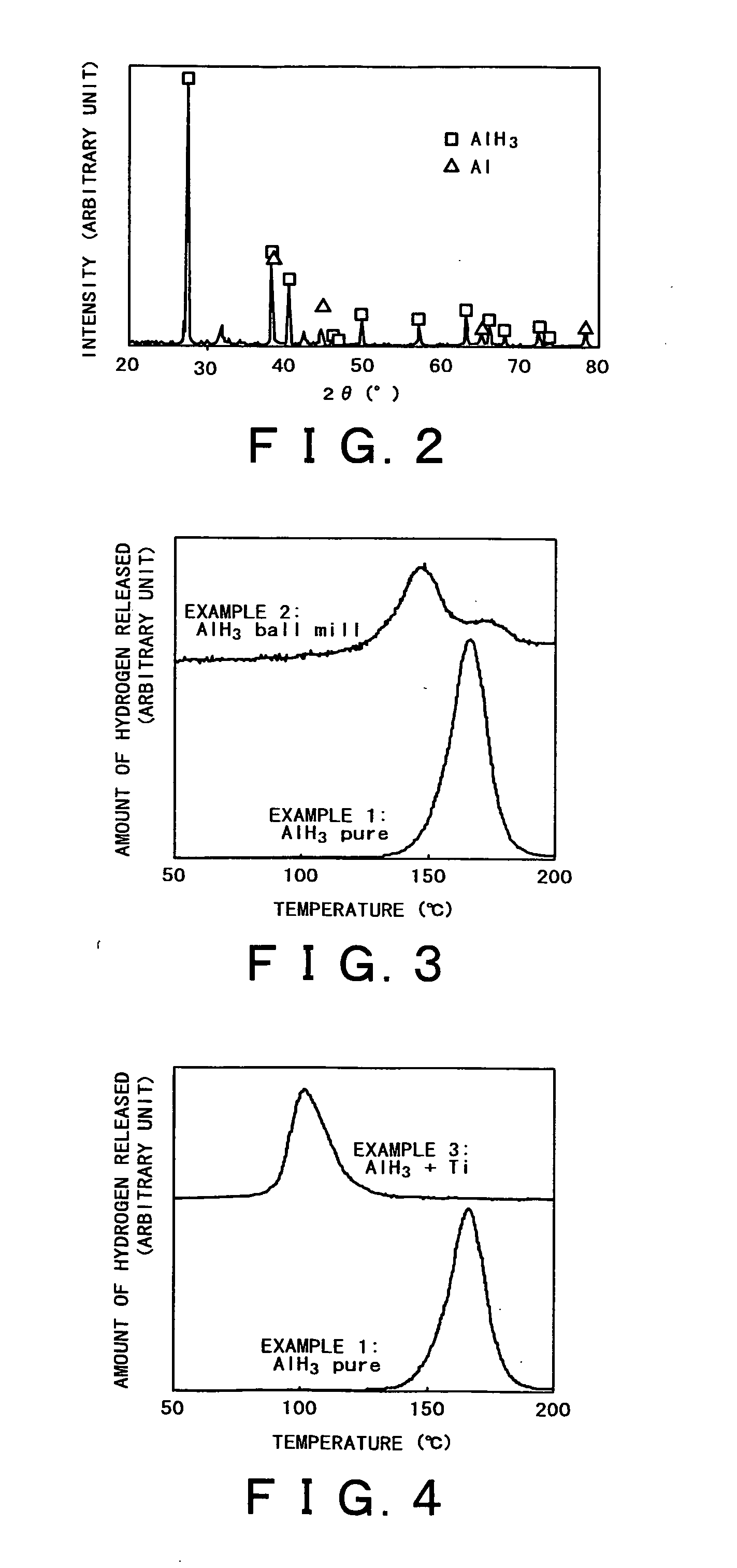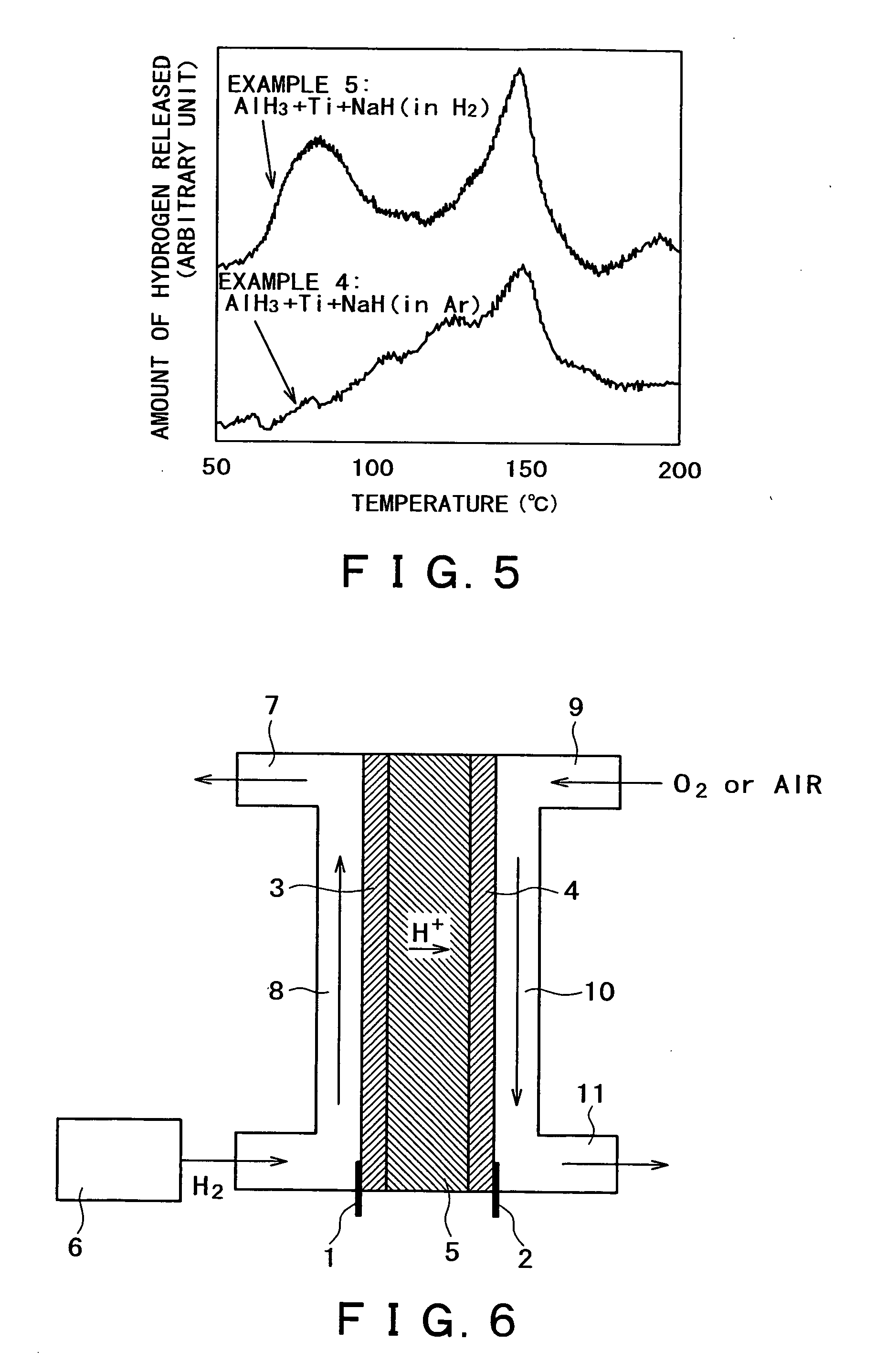Hydrogen occluding material and method for use thereof
a technology of occluding materials and hydrogen, which is applied in the direction of physical/chemical process catalysts, metal/metal-oxide/metal-hydroxide catalysts, chemistry apparatuses and processes, etc., can solve the problems of widespread skepticism about the long-term stable supply of fossil fuels, inconvenient transportation of heavy containers, and serious environmental disruption on the planet. , to achieve the effect of simple structur
- Summary
- Abstract
- Description
- Claims
- Application Information
AI Technical Summary
Benefits of technology
Problems solved by technology
Method used
Image
Examples
example 1
[0053] AlH3 as the aluminum hydride mentioned above was synthesized according to the formula (8) below.
LiAlH4+AlCl3→AlH3↓+LiCl↓ (8)
[0054] After the reaction was completed, the resulting sample was tested by powder X-ray diffractometry. A diffraction pattern as shown in FIG. 2 was obtained, which suggests high-purity AlH3 (JCPDS file, #23-0761).
[0055] The thus obtained AlH3 was tested for hydrogen release by observing the pressure change versus temperature at normal pressure. The sample was heated from room temperature to 200° C. at a rate of 2° C. / min. The amount of hydrogen released during heating was measured. The results are shown in FIG. 1.
[0056] It is apparent from FIG. 1 that AlH3, which is the hydrogen occluding material according to the present invention, releases hydrogen at a lower temperature than NaAlH4. It is also apparent that AlH3 releases hydrogen in one stage, whereas NaAlH4 releases hydrogen (due to thermal dissociation) in two stages. The hatched area in FIG....
example 2
[0057] The sample of AlH3 obtained in Example 1 was mechanically pulverized by using a three-dimensional ball mill (“TKMAC-1200” from Topologic Systems), which was run at 400 rpm for 10 minutes. The atmosphere in the ball mill was argon. The resulting fine powder of AlH3 was tested for hydrogen release in the same way as in Example 1. The results are shown in FIG. 3.
[0058] It is apparent from FIG. 3 that the sample of AlH3 which has been pulverized by ball milling releases hydrogen at a lower temperature than the sample of AlH3 remaining intact. It is considered that another unsharp peak that appears at about 170° C. is due to AlH3 partly remaining uncrushed.
example 3
[0059] The sample of AlH3 obtained in Example 1 was doped with titanium (Ti), and the resulting composite material was used as the hydrogen occluding material according to the present invention. The source of titanium as the dopant was TiCl3. Doping was accomplished by mixing the two components (in powder form) in an agate mortar for about 5 minutes.
[0060] The resulting sample was tested for hydrogen release in the same way as in Example 1. The results are shown in FIG. 4.
[0061] It is apparent from FIG. 4 that the composite material of AlH3 +Ti, as the hydrogen occluding material according to the present invention, releases hydrogen at a lower temperature than the sample of AlH3 in Example 1. A probable reason for this is that Ti (as a catalyst) exists on the surface of AlH3 so as to promote decomposition into hydrogen.
PUM
| Property | Measurement | Unit |
|---|---|---|
| temperature | aaaaa | aaaaa |
| thickness | aaaaa | aaaaa |
| temperature | aaaaa | aaaaa |
Abstract
Description
Claims
Application Information
 Login to View More
Login to View More - R&D
- Intellectual Property
- Life Sciences
- Materials
- Tech Scout
- Unparalleled Data Quality
- Higher Quality Content
- 60% Fewer Hallucinations
Browse by: Latest US Patents, China's latest patents, Technical Efficacy Thesaurus, Application Domain, Technology Topic, Popular Technical Reports.
© 2025 PatSnap. All rights reserved.Legal|Privacy policy|Modern Slavery Act Transparency Statement|Sitemap|About US| Contact US: help@patsnap.com



